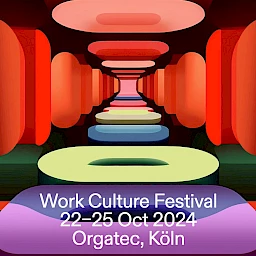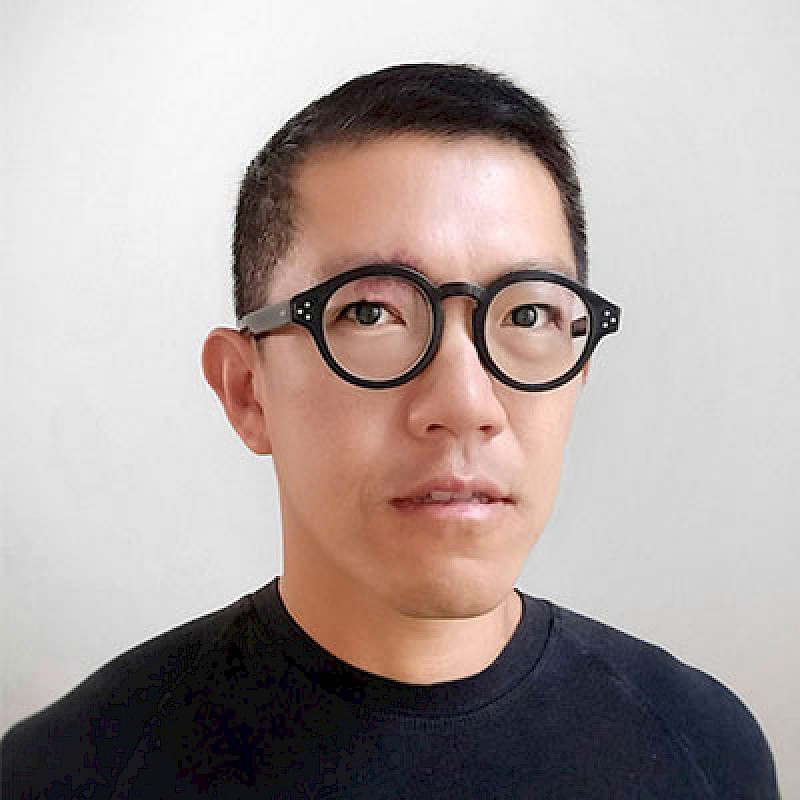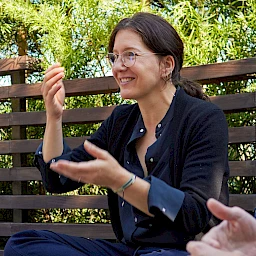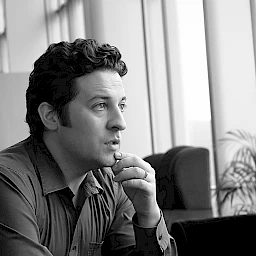Vaughn Tan, a consultant, author and speaker focusing on strategy for uncertainty and innovation, will give a lecture at the Work Culture Festival on 24 October 2024 on the topic “Designing teams and businesses to do innovation work”. In the IBA Forum interview, Tan discusses the crucial distinction between risk and uncertainty, highlighting how organizations can adapt by embracing a mindset that fosters flexibility and experimentation. Drawing insights from the tech industry, the public sector, and high-end cuisine, he explores how leaders can cultivate a culture that values creative problem-solving, ultimately enhancing innovativeness and resilience in the face of unpredictability.
You talk a lot about the difference between risk and uncertainty. How exactly can organizations shift their mindset from risk assessment to uncertainty?
The first crucial step is to understand that there is a difference between risk and uncertainty in the first place. Risk is when you don’t know exactly what will happen, but you do know all the possible actions you could take, the potential outcomes, the probabilities connecting those actions to outcomes, and how valuable each outcome is. With risk, you know almost everything there is to know about what you don’t know. Things are different with uncertainty. One or more of these elements (actions, outcomes, causation, or value) is unknown — you lack key information about what you don’t know.
When organizations think of the unknown as risky, they end up making their decisions using risk-management tools such as cost-benefit analysis or expected value calculations. They think they know enough to mitigate or manage the risks. However, when what they face is actually uncertainty, these methods don’t apply. True uncertainty is not optimizable in the same way and requires a fundamentally different approach. So, the first step for an organization to shift its mindset is to recognize that not all unknowns are risky — some are uncertain in ways that can’t be quantified or mitigated. When organizations recognize this, they can begin to explore new strategies for understanding the unknowns they face and managing uncertainty using appropriate tools. This shift in understanding is the foundation for adapting to an unpredictable world, and it is what I call an uncertainty mindset.
Your career covers experience at Google, with the public sector and NGOs, with startups, and in the cutting-edge hospitality industry. These are very different sectors. How have these experiences shaped your perspective on organizational design and innovation?
Although these industries seem vastly different, the process of innovation is remarkably similar. At Google, I worked on diverse projects ranging from Google Maps and Earth to large-scale data infrastructure, and what I noticed was that innovation came from within – it was decentralized. Individual teams identified interesting problems that didn’t have clear solutions yet and set out to experiment and solve them. This approach fostered a culture where innovation was not top-down, but emerged organically from the teams closest to the problems. When I later conducted research in restaurant R&D kitchens, such as at The Fat Duck and Noma, I was surprised to see that the same principles applied, despite the difference in outcomes.
In a restaurant, innovation produces food, while at Google it produces software, but the method of generating new ideas is fundamentally the same. Innovation, in any industry, involves a lot of trial and error. You try many things, most of them fail, but you learn from those failures and gradually build towards something truly new. This experience has reinforced my belief that successful innovation isn’t about big, perfectly executed plans. It’s about being comfortable with uncertainty, testing small ideas frequently, and learning from the results – whether they succeed or fail.
Whether it is in a high-tech company like Google, a restaurant like Noma, or a government agency or an NGO, innovation work is fundamentally different from standard execution work. You can’t plan it in the same way; instead, you need teams that are agile, resilient, and willing to experiment.
Visit the Work Culture Festival from 22 to 25 October at ORGATEC in Cologne

What practices in high-end cuisine that you describe in The Uncertainty Mindset are particularly useful for organizations in highly regulated or conservative industries?
The practices from high-end cuisine described in The Uncertainty Mindset can be surprisingly relevant for organizations in highly regulated or conservative industries, such as banking, insurance, or the public sector. The key isn’t to apply these practices directly, but rather to adapt the underlying principles to fit the context of each industry. One valuable practice is the way innovative restaurants approach hiring.
In traditional organizations, job descriptions are often rigid, with a clear set of tasks and qualifications that don’t take into account how the job might evolve. However, in dynamic environments such as restaurant R&D teams, they recognize that some aspects of a job will be unknown at the outset. They might define 80% of the role, but leave 20% open for the new hire to explore how they can contribute to the team in ways that weren’t initially anticipated. I call this negotiated joining. As a consultant, when I help organisations infuse negotiated joining into their hiring processes, they find that they are able to bring in unexpectedly relevant talent, talent that can think creatively and adapt to unforeseen challenges.
This is important for almost every industry, because almost every industry now faces unpredictable circumstances. Even a traditionally conservative industry like insurance is affected. Insurance companies, for example, cannot predict rare events such as two major storms hitting the same state in close succession — as has just happened in Florida. By adopting more flexible hiring practices, where part of the role is open-ended, organizations can better equip themselves with people who think creatively and are prepared to deal with these unexpected events. This approach isn’t limited to unusual industries such as high-end cuisine. It can also work in more conservative environments, and a similar concept can be seen in “20% time” at companies such as Google and 3M.
Negotiated joining is built on the principle of carefully designing uncertainty into job roles. This uncertainty in roles gives people space to innovate and explore ideas, even in a structured industry — and it leads to valuable and unexpected insights and increased resilience in the face of uncertainty.
You talk about open-endedness and maintaining open-ended roles through negotiated joining, which can be helpful in solving problems and being adaptable as an organisation. How can organizations build that open-endedness into their structures, or is it that 20% thing you mentioned before?
20% time is one way of building open-endedness into organizational roles, but it’s just one example of many. The key principle is to allow part of a role to be truly open-ended in the sense of not being determined in advance, but also to make sure that the open-ended parts of the role are negotiated, so that people can explore ideas or projects that might be useful for the organization. For example, a manager might allocate 50% of an employee’s time to defined tasks, while the other 50% can be spent exploring problems or solutions that align with broader team goals. This open-endedness can always be adapted to fit different organizational structures, but it requires leaders, managers, and HR practitioners who are willing to experiment taken-for-granted processes like hiring and staff development.
How should leaders behave in order to inspire or motivate innovation, and what skills does a leader need to engage in these open-ended negotiations?
Leaders need to move away from the traditional “command and control” mindset. Effective leaders today recognize that they don’t possess every skill required to tackle complex problems. Acknowledging this is the first step in creating an environment where team members with different skills are empowered to contribute. A crucial leadership skill in this context is the ability to set a clear direction without knowing all the steps required to get there. Leaders should focus on bringing people together and encouraging collaboration to solve uncertain challenges.
Leaders need to engage their teams in grounded conversations about what skills or ideas can help achieve a common goal, especially when the exact path forward is unknown. In addition, leaders should be transparent about uncertainty. Admitting, “I don’t know what’s going to happen next, but let’s figure it out together,” fosters trust. Pretending to have all the answers can backfire when reality proves otherwise. By openly discussing uncertainty and encouraging experimentation, leaders can build stronger, more resilient teams ready to innovate in uncertain environments.
It’s probably not just the leaders, it’s also the culture or the environment you’re in. So what kind of culture is needed?
Organizations need to be explicit that failure is not inherently negative — it’s important for leaders to actually say this, instead of assuming that their teams know it. I’d define this culture as one that values experimentation, learning, and adaptability, while maintaining stable core principles. It isn’t only about not punishing failure. It is actually more about training employees and teams to develop well-reasoned experiments, even if they fail. It’s also not about rewarding failure per se, but about rewarding failure that is the result of a rigorously reasoned process of experimenting. You want to encourage people to try new things with a clear rationale, and learn from the outcomes whether they are successful or not. This kind of culture focuses on rewarding effort and learning, rather than simply measuring success by whether an idea works. The key is to create an environment where trying new ideas is part of the process, and learning from failure becomes a path to success.
Let’s talk about innovation processes in organisations. How can they be designed to be regenerative rather than reactive to change?
Organizations need to cultivate open-ended roles and diversity of thought. By allowing negotiated roles — where part of the job is flexible and undefined — organizations create space for new perspectives and ideas. This approach encourages the recruitment of people who may not fit the traditional mould but who bring fresh, diverse thinking that can help the organization stay dynamic.
Organizational regeneration happens when these new perspectives feed into the organization, challenging existing ways of thinking and enabling it to evolve and change. Rather than simply reacting to external change, the organization is constantly renewing itself from within. This internal unpredictability allows it to better manage external uncertainties, fostering a culture of continuous adaptation and growth. By deliberately hiring people who think differently and giving them the structured freedom to explore, the organization can remain innovative and relevant over time.
You say that traditional organizational models are often too resistant to change. What are the key steps an organization needs to take to overcome this resistance?
Organizations need to rethink their fundamental internal processes — what in a software development context we might call “machine-level code.” These often invisible but crucial operations — like hiring processes, or incentive structures, or goal-setting processes — play a significant role in determining how adaptable an organization can be. The first important step is to rethink hiring practices. Many organizations unwittingly limit innovation by hiring people who resemble their current employees, limiting the influx of new ideas and perspectives. Companies need to ensure that their recruitment processes are open to diversity and out-of-the-box thinking. Goal-setting processes also need to become more flexible. Rigid goals can prevent teams from exploring new directions or adapting to changing circumstances. Organizations should set goals that allow for experimentation and adjustment along the way. How people are motivated is another critical factor. Often, only certain successes are rewarded, making the risks too high for innovative but potentially unsuccessful ideas. It’s important not only to reward successful outcomes but also to recognize well-thought-out efforts, even if they fail, as these can lead to new insights and breakthroughs.
Everyone is talking about AI, and everyone is thinking about how AI will affect the way we work. How do you think about what makes us uniquely human? What work should be done by humans and what work should be done by machines?
The key difference between humans and AI is that humans can make subjective decisions about value — I call this “meaningmaking” — and AI systems and other machines cannot do meaningmaking yet. Humans are uniquely able to make meaning, whether it is a trivial issue like preferring apples to pears, or deciding whether a legal precedent should be struck down or upheld. These are inherently subjective decisions about value which have no objectively correct answer, and only humans are able to resolve this uncertainty about value. Machines, on the other hand, can process vast amounts of data and execute tasks, but they lack the ability to understand or assess relative value in the same way that humans do.
In practice, this means that machines (including AI systems) can be given the task of doing routine tasks reliably and without cutting corners, but only after humans have done the meaningmaking work. But humans must always do that meaningmaking work first, whether it is as trivial as choosing apples over pears, or as consequential as deciding to uphold a legal precedent or make an investment decision.
Why should visitors come to your talk at work culture festival?
They should come if they want to understand how uncertainty is essential to innovation, and how to use uncertainty strategically to make whatever organisation or team, especially the one they’re part of, better able to deal with an increasingly uncertain world, I’ll have some concrete suggestions on what they can do that will work for them and not just for fancy companies with enormous resources and a reputation for being innovative.
Vaughn, thank you for the interview.
Vaughn Tan is a consultant, author, toolmaker, and professor of strategy at University College London. He’s spent over a decade helping businesses, not-for-profits, and government agencies design themselves to adapt to and profit from uncertainty. He holds a PhD from Harvard University and Harvard Business School. Vaughn advises businesses and not-for-profits as a consultant and board member, working at the intersection of innovation management, product strategy, and organisational design. His expertise is in designing (or redesigning) organisations to be more innovative and resilient to uncertainty in the operating environment. His first book, The Uncertainty Mindset (2020), is about how uncertainty can be used to drive innovation and adaptability. The book is based on nearly a decade working with some of the best R&D teams in cutting-edge cuisine, and it’s available worldwide by Columbia University Press. Vaughn is currently working on his second book, about strategies for dealing with different types of not-knowing. In a previous life, Vaughn worked at Google in California on special projects (including spaceflight and big structured data) and consumer products (including Earth, Maps, and Streetview). More information: vaughntan.org and https://www.linkedin.com/in/vaughntan/.
Cover photo: © RossHelen / iStock







